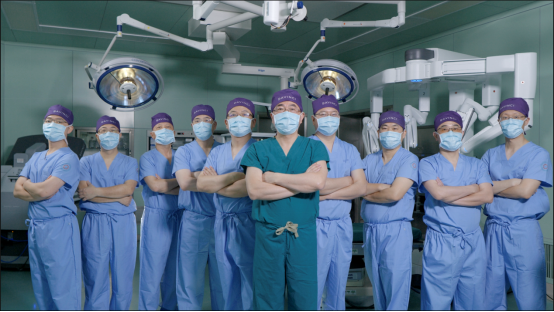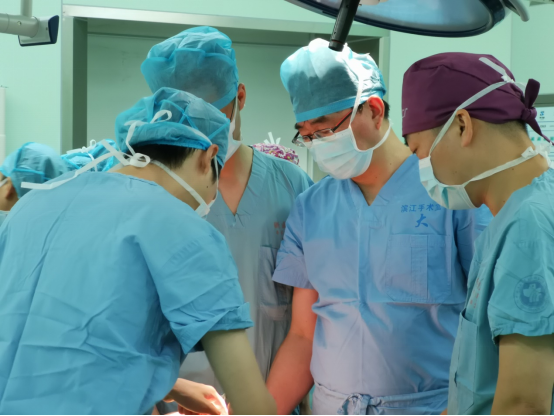ZCH Pioneers Robot-Assisted Surgery to Alleviate Children’s Pain
In April 2020, the Children’s Hospital of Zhejiang University School of Medicine (ZCH), took the lead in introducing the first Da Vinci surgical robot to children’s hospitals in China. This cutting-edge technology found its home in the hospital’s 15th operating room. Since the arrival of this machine, the 15th operating room has been operating almost 24/7. Over the past 43 months, it has been involved in more than 2,300 surgeries with a success rate exceeding 99%.

Under the doctors’ adept operation, the cold instruments have been turned into magical tools, thus alleviating the suffering of thousands of children plagued by diseases.
Xinxin is a 5-year-old boy from Jiaxing City, Zhejiang Province. Two years ago, he underwent “heart repair” surgery at ZCH due to patent ductus arteriosus (PDA). He was the first child in the country to undergo PDA ligation surgery with the assistance of the Da Vinci surgical robot.
“The child is now in kindergarten, with his height and weight exceeding the class average. He rarely experiences colds or fevers.” Two years have passed, and his good health has even allowed his parents to forget that he was once a child with congenital heart disease.
His parents mentioned that before the surgery, they had also contemplated other treatments. They opted for PDA ligation surgery with the assistance of the Da Vinci robot because they wanted to have their child treated in a thorough yet minimally invasive way, which worked out just as they’d hoped.
Xinxin’s surgery was performed by the team led by Professor SHU Qiang, a pioneer in pediatric surgery. His team is also the world’s first to attempt Da Vinci surgical robot-aided PDA ligation surgery. SHU Qiang acknowledged that PDA is not a complex condition and the surgery could have been performed efficiently without the Da Vinci robot, which would involve less risk and pressure for the doctors. However, it is hard to achieve technological progress without exploration and innovation. The surgical outcomes justified the value and merit of the attempt.
Similarly, Mei Mei, a 12-year-old patient, also benefited from Da Vinci robot surgery. Having been diagnosed with a liver tumor measuring the size of a goose egg (7.6*6.4cm) over a year ago, Mei Mei underwent Da Vinci robot-assisted liver tumor removal surgery and was discharged in less than ten days. Professor GAO Zhigang, Director of the Laparoscopy Center, led the surgical team. Mei Mei is now able to attend school every day, showing no signs of being a former liver tumor patient.
“Advancements led by the surgical team in the fields of cardiology, thoracic surgery, urology, general surgery, neonatology, and oncology have expanded the applications of surgery. Even newborns weighing 1.5kg can now undergo such surgery, and an increasing number of children are benefiting from modern medical advances,” Prof. Shu Qiang said.

ZCH has been designated as the National Teaching Demonstration Center for Da Vinci Robotic Surgery, the Chinese Pediatric Thoracic Surgery Teaching Center for Da Vinci robotic surgery, and the Artificial Intelligence-assisted Treatment Technology Training Base. The hospital will continue to spearhead domestic exploration into the integration of medical education and practices, disseminating advanced experiences and technologies not only within the country but also internationally. Pediatric Robotic Surgery, co-edited by SHU Qiang and others, was recently published by Springer and distributed globally.
“Our multifaceted exploration and innovation, such as the innovative layout for reducing Trocar spacing and depth for newborn patients, and lowering pneumoperitoneum pressure to a minimum, have significance for our international counterparts as well.” noted GAO Zhigang.




